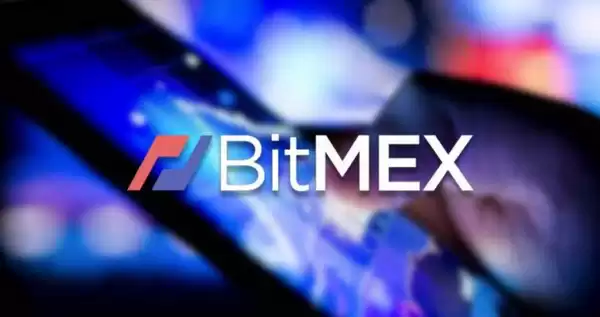-
 bitcoin
bitcoin $109667.069529 USD
-3.03% -
 ethereum
ethereum $3936.685804 USD
-4.07% -
 tether
tether $1.000493 USD
0.01% -
 xrp
xrp $2.771823 USD
-4.74% -
 bnb
bnb $957.805027 USD
-5.34% -
 solana
solana $196.735100 USD
-6.68% -
 usd-coin
usd-coin $0.999727 USD
-0.01% -
 dogecoin
dogecoin $0.227355 USD
-5.12% -
 tron
tron $0.335205 USD
-0.81% -
 cardano
cardano $0.779256 USD
-3.59% -
 ethena-usde
ethena-usde $0.999900 USD
-0.06% -
 hyperliquid
hyperliquid $42.492095 USD
-6.61% -
 chainlink
chainlink $20.501853 USD
-4.34% -
 avalanche
avalanche $28.952606 USD
-11.21% -
 stellar
stellar $0.356038 USD
-3.93%
How to trade BitMEX contracts without losing money
Navigating the complexities of BitMEX contracts demands a comprehensive strategy encompassing technical analysis, risk management, and emotional control for successful trading in the volatile crypto market.
Nov 13, 2024 at 02:49 am

BitMEX, a popular platform for trading cryptocurrency derivatives, offers a diverse array of contracts that enable traders to speculate on the price movements of various cryptocurrencies. However, the complexities of these contracts and the inherent volatility of the crypto market pose significant risks to traders. To effectively navigate BitMEX contracts and avoid financial losses, traders must adopt a comprehensive strategy that encompasses technical analysis, risk management, and a disciplined trading approach.
Step 1: Understanding the Basics of BitMEX Contracts- Futures Contracts: Futures contracts are agreements to buy or sell a specific number of a cryptocurrency at a predetermined price on a future date. Traders can use futures contracts to hedge against price fluctuations or speculate on future price movements.
- Perpetual Contracts: Perpetual contracts, also known as perpetual swaps, are similar to futures contracts but have no fixed expiration date. They allow traders to hold open positions indefinitely and benefit from fluctuations in the underlying cryptocurrency's price.
- Leverage Trading: BitMEX offers leverage of up to 100x on its contracts. While leverage can magnify profits, it also amplifies losses. Traders should exercise caution and carefully manage their risk exposure when utilizing leverage.
- Technical Analysis: Technical analysis involves analyzing price charts and market data to identify trends, patterns, and trading opportunities. Traders can use indicators such as moving averages, Bollinger Bands, and Fibonacci retracements to develop insights into market behavior.
- Fundamental Analysis: Fundamental analysis examines the underlying factors that influence the value of a cryptocurrency, such as market news, macroeconomic conditions, and blockchain developments. Understanding fundamentals can provide context for trading decisions and help traders identify potential catalysts for price movements.
- Risk Management: Effective risk management is crucial for mitigating losses. Traders should determine their risk appetite, set stop-loss orders to limit downside risk, and avoid overtrading. Position sizing is also essential, ensuring that trades are proportionate to the trader's account balance and risk tolerance.
- Entry Strategies: Traders use various entry strategies to identify optimal points to enter the market. These strategies can include trend following, breakout trading, and support/resistance levels.
- Order Types: BitMEX offers different order types to facilitate precise trade executions. Limit orders allow traders to specify the desired execution price, while market orders execute trades immediately at the best available market price.
- Position Monitoring: Once trades are executed, traders must monitor their positions closely and make adjustments as needed. This involves tracking price movements, managing risk, and adjusting stop-loss orders to protect against adverse market conditions.
- Controlling Emotions: Trading can be an emotional endeavor, especially in volatile markets. Traders must learn to control their emotions, avoid rash decisions, and stick to their trading plans. Fear of loss and greed can cloud judgment, leading to costly mistakes.
- Discipline and Patience: Discipline is essential for successful trading. Traders must adhere to their trading strategies and avoid chasing losses or making impulsive trades. Patience is also crucial, allowing trades to play out fully and avoiding premature exits.
- Ongoing Learning: The crypto market and trading strategies are constantly evolving. Traders should remain committed to ongoing education to keep their skills and knowledge up-to-date. This includes studying market trends, reading books, attending webinars, and seeking guidance from experienced traders.
- Self-Reflection: Self-reflection is an integral part of improving trading performance. Traders should regularly evaluate their trades, identify areas for improvement, and adjust their strategies accordingly. Keeping a trading journal can provide valuable insights and help traders gain a deeper understanding of their strengths and weaknesses.
Disclaimer:info@kdj.com
The information provided is not trading advice. kdj.com does not assume any responsibility for any investments made based on the information provided in this article. Cryptocurrencies are highly volatile and it is highly recommended that you invest with caution after thorough research!
If you believe that the content used on this website infringes your copyright, please contact us immediately (info@kdj.com) and we will delete it promptly.
- XRP Price: October Rally on the Horizon After September Consolidation?
- 2025-09-26 16:25:13
- Bitcoin Price Wobbles: Investors Buy the Dip as Powell's Words Stir Uncertainty
- 2025-09-26 16:25:13
- Kaspa Price, Smart Contracts, and the 2026 Forecast: A New York Minute
- 2025-09-26 16:30:01
- Bitwise, Hyperliquid ETF, and HYPE Token: What's the Deal?
- 2025-09-26 16:45:14
- B HODL, Bitcoin, and Treasury Purchases: The New Institutional Playbook
- 2025-09-26 17:05:15
- Cloudflare, Stablecoins, and AI Agents: A New Era of Automated Finance
- 2025-09-26 16:45:14
Related knowledge

Practical parameter settings for a Bitcoin multi-timeframe moving average system
Sep 18,2025 at 10:54pm
Optimizing Timeframe Combinations for Bitcoin Trading1. Selecting appropriate timeframes is crucial when building a multi-timeframe moving average sys...

How can I filter out false breakouts in Dogecoin high-frequency trading?
Sep 22,2025 at 01:00am
Understanding False Breakouts in Dogecoin Trading1. A false breakout occurs when Dogecoin's price appears to move beyond a defined support or resistan...

Techniques for identifying tops and bottoms in the Bitcoin on-chain NVT model
Sep 20,2025 at 07:54pm
Understanding the NVT Model in Bitcoin Analysis1. The Network Value to Transactions (NVT) ratio is often described as the 'P/E ratio' of the cryptocur...

What does the surge in open interest in Bitcoincoin futures mean?
Sep 20,2025 at 11:18pm
Understanding the Surge in Dogecoin Futures Open Interest1. A surge in open interest within Dogecoin futures indicates a growing number of active cont...

How can I use the Ethereum USDT premium to gauge market sentiment?
Sep 18,2025 at 11:55pm
Understanding the Ethereum USDT Premium1. The Ethereum USDT premium refers to the price difference between USDT (Tether) traded on Ethereum-based plat...

What should I do if Ethereum staking yields decline?
Sep 20,2025 at 06:18am
Understanding the Causes Behind Declining Ethereum Staking Yields1. The Ethereum network transitioned to a proof-of-stake consensus mechanism with the...

Practical parameter settings for a Bitcoin multi-timeframe moving average system
Sep 18,2025 at 10:54pm
Optimizing Timeframe Combinations for Bitcoin Trading1. Selecting appropriate timeframes is crucial when building a multi-timeframe moving average sys...

How can I filter out false breakouts in Dogecoin high-frequency trading?
Sep 22,2025 at 01:00am
Understanding False Breakouts in Dogecoin Trading1. A false breakout occurs when Dogecoin's price appears to move beyond a defined support or resistan...

Techniques for identifying tops and bottoms in the Bitcoin on-chain NVT model
Sep 20,2025 at 07:54pm
Understanding the NVT Model in Bitcoin Analysis1. The Network Value to Transactions (NVT) ratio is often described as the 'P/E ratio' of the cryptocur...

What does the surge in open interest in Bitcoincoin futures mean?
Sep 20,2025 at 11:18pm
Understanding the Surge in Dogecoin Futures Open Interest1. A surge in open interest within Dogecoin futures indicates a growing number of active cont...

How can I use the Ethereum USDT premium to gauge market sentiment?
Sep 18,2025 at 11:55pm
Understanding the Ethereum USDT Premium1. The Ethereum USDT premium refers to the price difference between USDT (Tether) traded on Ethereum-based plat...

What should I do if Ethereum staking yields decline?
Sep 20,2025 at 06:18am
Understanding the Causes Behind Declining Ethereum Staking Yields1. The Ethereum network transitioned to a proof-of-stake consensus mechanism with the...
See all articles










































































